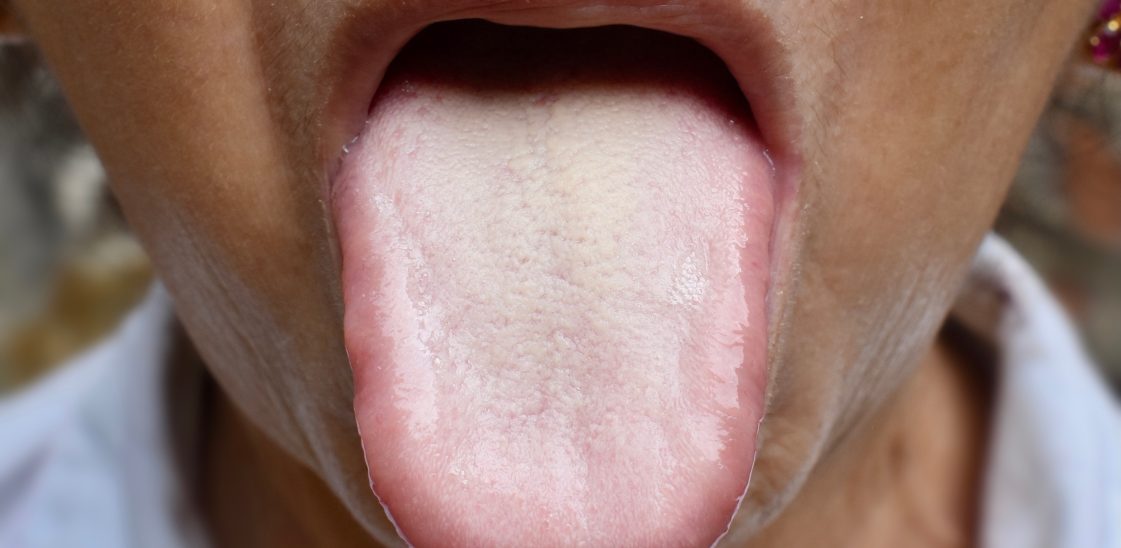
How do you treat leukoplakia?
Leukoplakia is a condition notable for causing white patches on the tongue, mouth or gums that cannot be scraped away. Other conditions, such as oral thrush or geographic tongue, can cause similar symptoms, so it’s important to familiarise yourself with what leukoplakia looks like so you can judge whether it’s leukoplakia or something else. If you’re still not sure, your dentist should be able to help you find out[1].
If you think you might have leukoplakia, you’re probably wondering what can be done about it. Keep reading to learn more about how to treat leukoplakia.
Does leukoplakia go away?
In many cases, treatment for leukoplakia is not required. You’ll likely be asked to book regular dental check ups so that your dentist can keep an eye on the white patches in your mouth. They’ll be looking for any changes in colour or shape that could indicate your leukoplakia is getting better or worse.
Depending on what has caused your leukoplakia, it may get better if you avoid that cause. It’s thought that leukoplakia is triggered by irritation of your mouth tissue, which can have a number of causes. It could stem from excessive smoking or drinking, so your leukoplakia patches may get smaller if you cut back or quit altogether. Alternatively, leukoplakia might be caused by abrasions from rough teeth or poorly fitting dentures, in which case fixing those issues may help. On the other hand, leukoplakia might be caused by an underlying inflammatory condition, so it may be something you need to talk to your GP about[1].
It’s also a good idea to stick to a thorough dental hygiene routine to help keep cavities and tooth decay at bay, as this can cause those rough edges to your teeth when they are damaged. As well as brushing twice a day with a fluoride toothpaste, make sure to clean between your teeth with specially designed brushes such as Dentek’s Eco Easy Brush, which come with a fluoride coating to promote healthy teeth and a minty taste to keep you feeling fresh[2].
Can leukoplakia be cured?
As mentioned, in many cases your leukoplakia will simply be monitored over time without any particular treatment being given. However, it may be necessary to remove the white patches from your mouth. This is usually only done if your dentist or GP feels there is a greater than usual risk of mouth cancer developing. Leukoplakia carries a small risk of cancer, so it’s not necessary to take action in every case. If you’re concerned about the risk, you can discuss your options with your dentist.
If your dentist advises you that removing the patches would be the best option, you should know that it is a very simple procedure. The area will be numbed with a local anaesthetic, just as it would for many other dental procedures. If you’re particularly anxious or would prefer to be unconscious for whatever reason, general anaesthesia may be used instead. The patch or patches will then be removed. This might involve a laser or a small surgical scalpel. Afterwards, your mouth should heal quickly[1].
How to get rid of hairy leukoplakia
Hairy leukoplakia is a slightly different condition as it has a different cause to the other type of leukoplakia. Hairy leukoplakia is caused by the Epstein-Barr virus, which is best known for causing glandular fever or mononucleosis. You might not have been infected recently, as the virus can go dormant after the initial infection and remain in your body for several years.
Hairy leukoplakia – and other symptoms associated with the virus – may appear when your immune system is weakened and the virus has a chance to attack once more. This could happen if you have HIV or if you’re on immunosuppressants after an organ transplant, for example.
Unlike the other type of leukoplakia, hairy leukoplakia does not carry a risk of mouth cancer, so it’s not usually necessary to remove the patches from your mouth. Instead, you might be given antiviral medications to fight off the Epstein-Barr virus. This might take the form of a medication applied directly to the patches, or something you swallow.
In the majority of cases, neither leukoplakia nor hairy leukoplakia is something to worry too much about. If you think you have the condition, speak to your dentist or GP, who will be able to help you find out if that is the cause of the patches in your mouth, and if so, what the best treatment for you is[1].
Resources:
[1] https://www.nhs.uk/conditions/leukoplakia/
[2] https://www.nhs.uk/live-well/healthy-teeth-and-gums/how-to-keep-your-teeth-clean/




